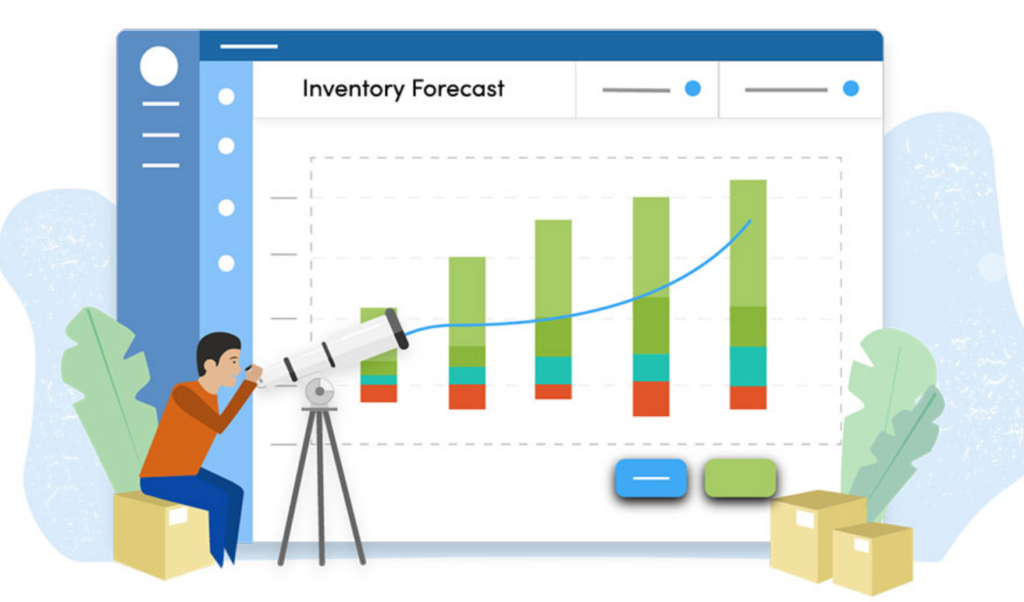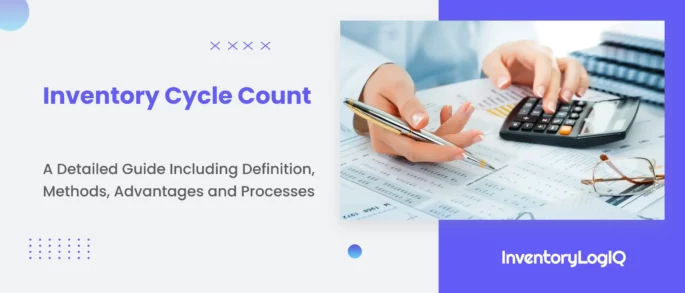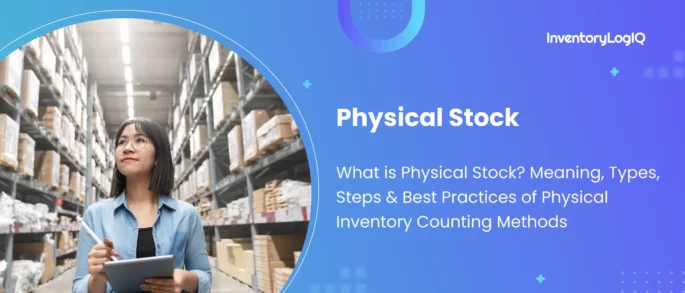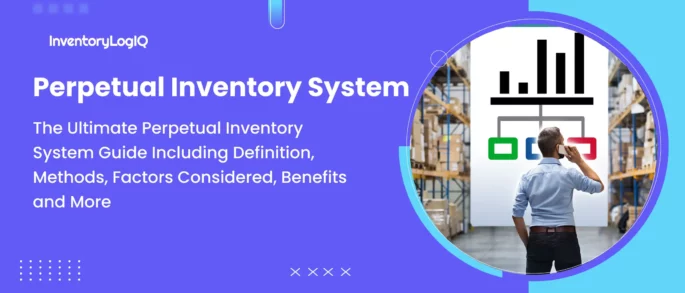Supply Chain Forecasting: A Detailed Guide Including Quantitative and Qualitative Forecasting Methods in the Supply Chain in 2023
Supply chain forecasting is essential for businesses that produce things for inventory. To avoid an overcapacity situation, manufacturers will use material forecasting to generate the quantity needed to satisfy their clients. The projection must also be accurate. Financial catastrophe may result from failure to maintain a precise prediction.
Forecasts are created for a corporation’s final items, parts, and service components. The production team uses the estimates to develop the quantities, safety stock levels, and purchase order triggers. Therefore, the prediction should be regularly evaluated by management. It must consider information about potential trends and the internal and external environments to provide a more accurate forecast.
- What is Supply Chain Forecasting?
- 8 Reasons Why Forecasting is Crucial in Supply Chain Management in 2023
- Major Challenges in Supply Chain Forecasting
- Forecasting Methods in Supply Chain Management System
- How to Utilize Supply Forecasting Methods
- Qualitative Forecasting Methods in the Supply Chain
- Quantitative Forecasting Methods in the Supply Chain
- Benefits of Demand Forecasting in Supply Chain Management
- Conclusion: Reap the Benefits With InventoryLogIQ’s Accurate Supply Chain Forecasting
- Supply Chain Forecasting: FAQs
What is Supply Chain Forecasting?
To assist you in making the right choices for your company, whether it be about stock inventories, cargo booking, budget planning, or entering new markets, supply chain forecasting integrates data from the historical supply with insights and understandings about demand. The majority of supply chain forecasting is comprised of supply analysis. It entails analyzing supplier data to determine when you should place orders for their goods, whether they are finished goods or raw components that will be assembled further along the supply chain.
Understanding how much of your product your consumers desire during any particular week, monthly or quarterly may be determined by analyzing demand. This is impacted by several predictable variables, like seasons and holidays, and others unforeseeable, such as world events and natural catastrophes. Without a grasp of the future, supply chain planning is all but impossible. So how does an online company go about supply chain forecasting to make more accurate forecasts and judgments, given that an eCommerce logistics supply chain has many moving parts?
Businesses of all sizes may employ various supply chain forecasting techniques without hiring a psychic. There is undoubtedly a forecasting technique that suits your demands, depending on the size of your company, the items you offer, and how long you’ve been in operation. You will discover the significance of supply chain forecasting as well as the most popular qualitative and quantitative forecasting methods in the supply chain in this article.
8 Reasons Why Forecasting is Crucial in Supply Chain Management in 2023
Anticipating demand, supply, and price within an industry is supply chain forecasting. To forecast the future of an enterprise, one must look at the competitors, gather information from suppliers, and examine historical trends. Therefore, a supply chain manager should be proficient in forecasting, which involves a variety of abilities that one should develop throughout their career. Various benefits are mentioned below:
Planning Techniques
Forecasting significantly enhances the scheduling and inventory planning process. A supply chain may stay competitive by tracking historical and present product demand.
Seasonal Demand Variations
Being able to anticipate and prepare for seasonal fluctuations in demand is only one of the many reasons supply chain management needs forecasting. In a similar line, demand forecasting in supply chain is extremely helpful for organizing promotional activities and product debuts, which are both crucial. In addition, predictions supported by evidence need less guessing, which is a relief.
Product Demand Forecasting
In a more general sense, supply chain forecasting enables the prediction of product demand in even the most particular circumstances. But, of course, no business can accurately foresee the future. Still, a company may come as near as feasible by relying on trends and making judgments based on previous and present facts, and a company may come as close as possible.
Customer Contentment
In sectors that focus on products, an understanding of client wants is crucial. Orders with short lead times will be delivered on time if it is possible to foresee client demand. Additionally, this will result in a rise in consumer and supplier trust.
Safety Stock Lowering
Safety stock is, by definition, extra inventory kept on hand as a backup in case a product’s demand rises. However, with forecasting, no more precaution is required. This frees up storage space, reduces stress, and saves time.
Reduction of Inventory Stockouts
Demand forecasting in supply chain management is crucial for JIT (Just In Time) systems and purchasing from suppliers with long lead times. In JIT systems, demand forecasting enables products to sit in storage for a shorter time, resulting in less money being lost than if products were to occupy warehouse space for a prolonged time. In addition, demand forecasting in supply chain is necessary for suppliers with lengthy lead times so that you may receive your items on time.
Enhanced Shipping
Every step of the supply chain forecasting process is impacted by supply and demand. For instance, supply chain managers will have more time to guarantee that there are enough workers on hand to ship a specific product if they can estimate the demand for a particular product. Conversely, orders are delayed if there are not enough employees to fulfill them. Similarly, having an excessive number of employees leads to high labor expenditures.
Improved Pricing
By using price forecasting, a corporation regains control. The effects of price changes on a specific supply chain segment can be anticipated and managed appropriately.
Suggested Read: What is Inventory Forecasting?
Major Challenges in Supply Chain Forecasting
Supply chain forecasting planning might be complex for your company due to several issues. These consist of various factors as discussed below:
Adapting to Regulations
Most of us felt the COVID-19 pandemic’s effects on modifying legislation in the previous year or two, mostly overnight. As a result, your short-term projections may have been thrown out the window, for instance, if you suddenly needed to place a sizable order to prepare for decreased shipment frequency because one of your leading suppliers was in an area that was placed under lockdown for a while.
Returns of Goods
Businesses having an online eCommerce presence have massive potential because of the continued rise in popularity of online purchasing. However, because of rules governing the acceptance of product returns, your sales data may frequently advise you to place orders for goods that will eventually return to your inventory. As a result, you are left with extra inventory. To minimize overordering, many organizations now incorporate returns projections into their supply chain forecasting by employing machine learning and other technology to anticipate a return rate.
Trends
This week’s hottest new product will probably be replaced by something else within a few days due to how we utilize social media nowadays. Due to this, forecasting future demand may be difficult, allowing you to walk a narrow line between sitting on mountains of extra stock and losing revenue because you couldn’t keep up with demand from customers due to a shortage of inventory.
Seasonality
Many businesses continue to make substantial supply chain forecasting mistakes at these times, even if they know when seasonal sales will increase or decrease and have the sales history to support that knowledge. Unfortunately, you fall into this category if you have nothing on your shelves a week before Christmas or are still selling off clearance items in March!
Lead Times
Among the events that might abruptly cause lead times to lengthen and leave you with stockouts while you wait for things to stabilize are natural catastrophes, pandemics, armed conflict, and trade wars.
Database Sets
Many companies continue to maintain separate databases for their online and offline transactions. If this is you, merging data from several Excel spreadsheets will take a lot of effort. You may also face poor forecasting and understanding of demand since you are making orders based on insufficient data.
Forecasting Methods in Supply Chain Management System
Supply chain forecasting is a method for comparing expected future demand to actual past demand. Demand forecasting in the supply chain is used for financial, logistical, operational, and sales planning and decision-making in the future. Instead of concentrating on numerical numbers, businesses analyze and assess the opinion of experienced personnel by utilizing quantitative forecasting methods in the supply chain. These methodologies anticipate short-term or internal forecasting based on departmental heads’ summative input.
On the other hand, the quantitative forecasting method uses numerical data and focuses on projecting patterns based on previous company data. This forecasting technique is reliable and beneficial for the business’s long-term scenario planning. While quantitative data in consumer surveys are utilized to reflect the sales prediction, expert opinion within the firm aids in predicting an organization’s internal parameters. Moreover, due to its simplicity and cost-effectiveness, small businesses use qualitative forecasting methods in supply chain. On the other hand, large companies and lean manufacturing are adept at applying quantitative forecasting.
How to Utilize Supply Forecasting Methods
Forecasting is a dangerous endeavour in and of itself, and the forecaster has a part to play in deciding which technique of demand forecasting in supply chain is appropriate. However, each of these approaches has a clearly defined purpose. Thus it is essential to carefully consider which approach is best given the current economic climate. The situational context of the prediction, availability of historical data, expected level of accuracy, knowledge of the pillars of demand planning, and the forecast’s assessed value concerning the business are all crucial when using this approach. Therefore, evaluating them using the given parameters is essential before selecting a technique.
Similarly to this, the product’s life cycle should be considered. Is the item durable or perishable? Does it stay on the shelves, disappear from the market after being dispersed to the intermediaries, or become outdated? Is the product at its peak of development or growth? Again, having reliable data on these factors will make selecting the best forecasting technique easier. Business managers must collaborate with forecasters/demand planners for forecasting to be successful. This will make it easier to determine the forecast’s objective, how it should be understood and applied to the current circumstances, and the tactics and strategy for preventive purposes.
Qualitative Forecasting Methods in the Supply Chain
The subjective judgement used in the qualitative supply chain forecasting approach is based on the views of both consumers and industry professionals. When there is no historical data, this approach is used. Various qualitative methods in supply chain forecasting are as follows:
Expert Judgement
The opinions of subject-matter experts in the field are considered to produce accurate estimates. Since it is independent of statistical data, it may be carried out without quantifiable data. Using this simple, rapid procedure, the team often modifies the projection’s outcome to match its expectations.
Market Analysis
A corporate organization may do market research to help with its sales prediction. The company’s employees or a research organization contracted to handle it may carry out this strategy. In any case, market research may incorporate techniques like telephone, survey, or in-person interviews, as well as questionnaires.
Focus Sessions
This is a well-preferred technique for supply chain forecasting in qualitative forecasting methods. It entails an open-ended discussion with five to ten individuals representing a company’s target market. A moderator often oversees the participants’ turn-taking and asks questions on how they see the brand, goods, slogans, designs, and related ideas. Participants are anticipated to offer thoughtful replies that reflect the viewpoint of the target market. Focus group talks may include rewards, such as money or any similar gesture in the form of free goods.
Historical Comparisons
This supply chain forecasting technique looks at the past sales of a product similar to the one sold now to project future sales. In addition, it may be used to forecast how a new product or line of items will perform on the market. This is accomplished by utilizing the historical data amassed over time from a comparable product created by the firm or a serious rival.
Delphi Approach
This supply chain forecasting technique uses an iterative function to integrate market orientation with the opinions of a small group of specialists. The outcomes of these iterated combinations aid in creating the following parallel intersections needed to find a precise forecast. However, expert opinions are acquired separately to avoid the effect of a dominant personality’s perspective if a group discussion technique were used. Instead, ideas are gathered, summarised, and presented to the same experts by an outside party. The circle keeps going until a meeting point is reached, and new questions may be added. For long-term forecasting, this approach has proven reliable and successful.
Panel Agreement
With this supply chain forecasting approach, a company firm’s members from all levels collaborate to create its prediction. All participants are free to express themselves because it is an open procedure. However, there may be sentiments of intimidation and the suppression of opinions on the part of the former because it often comprises participants from the lowest level of the organizational hierarchy to superiors. For instance, a sales manager who truly comprehends the market would hesitate to disagree with the president’s and vice president’s statements. Ultimately, the panel consensus procedure might not be entirely transparent, equitable, and trustworthy.
Quantitative Forecasting Methods in the Supply Chain
When historical data is available, the quantitative supply chain forecasting approach is used, and unlike the former, it is objective to the extent that the data are actual. Various methods are listed below:
Average Movement
This time series approach uses calculations to look at data points by constructing average series from different subsets of the whole data. A sequence of numbers and a predetermined subset size are used in the formula. By subtracting the first number from the series and adding the value that comes after it in the subset series, the forecaster alters the average of the formerly fixed subset. This statistical approach is typically used to cope with changes that last only briefly, including technical, financial data analysis and GDP evaluation.
Explicit Smoothing
This straightforward supply chain forecasting approach quantifies various conclusions based on the user’s preexisting hypotheses, including seasonality. Then, the future is forecasted using an algorithm that uses historical data. In contrast to several other smoothing techniques, it yields a simple conclusion without requiring a certain minimum quantity of observations.
Analysis of Regression
This refers to a class of forecasting techniques that rely on data from other factors (dependent and independent). It relies heavily on the user’s ability to use the data generation procedure. There are two types of linear regressions: simple linear regressions, which compare an independent variable to a dependent variable, and multiple linear regressions, which compare two or more independent variables to a single dependent variable.
Adaptive Smoothing
Using this supply chain forecasting strategy, a business organization may input several factors to determine every possible outcome from a particular business action or decision. There are also variable and statistical data analyses involved. In businesses with ambiguous quantities, it is typical.
Visual Techniques
Although a statistical procedure is involved, it is straightforward and helpful for the sales projection. Using this technique, periodic sales data for different years may be visually represented using meeting points created by free-hand line drawing. The minimum is determined by the distance between the line and the facts on the graph.
Modelling with Econometrics
This has enhanced the regression analysis. It entails doing independent regression calculations using an equation, variables, and data. Meanwhile, economic theories are included in the statistical approach to ascertain how one economic variable affects another.
Life-Cycle Analysis
This supply chain forecasting technique examines and projects a new product’s growth and development rates. The model combines data that various market segments have accepted or rejected, including creators, early and late adopters, early and late majority, etc. The outcome is what is utilized to forecast sales for a new product.
Benefits of Demand Forecasting in Supply Chain Management
Your operations and the kinds of historical data, if any, that are available will determine the types of forecasting methodologies you apply. Several techniques may be used, including quantitative forecasting, trend forecasting, and qualitative forecasting. To receive the benefits listed below, you can include one approach or a variety of forecasting styles in your business strategy and objectives. Some of the main benefits are listed below:
Meeting Increased Product Demand
You may plan to enhance manufacturing operations to meet strong demand and prevent eCommerce warehouses from running out of stock by forecasting client purchase habits. In addition, you can switch distribution inventory methods to accommodate high demand so that shop shelves can stock items as you outperform the competition.
You can choose which places to ramp up production to meet fulfillment centers standards when you have several manufacturing facilities spread out nationwide. This technique enables you to effectively control distribution and transportation costs and provides additional cost savings for your supply chain.
Reducing Inventory Waste
The production of surplus goods is one of the most significant and expensive issues supply chain forecasting networks encounter. Products occupy precious shelf and warehouse space as consumer demand declines. You can better manage your inventory levels via forecasting procedures.
Surplus inventory demonstrates an uncontrolled supply chain forecasting management system. More than just essential resources are wasted, which causes wasting resources, labour, and money on production. When the old items become obsolete, you will eventually need to divert your efforts towards acquiring products from merchants or relocating things from various warehouses into other storage facilities.
Streamlining Data Collection and Inventory Management Systems
Other advantages of supply chain forecasting include collecting and exchanging real-time data for improved operations. Every supply chain forecasting department uses inventory management systems to gather, analyze, and share data to reduce forecasting mistakes and enhance logistical capabilities. For improved management procedures, you have greater visibility and transparency with your suppliers, manufacturers, distributors, and retailers along the supply chain. As a result, you can streamline operations for improved inventory management and reduce transportation delays.
It’s important to remember that every department may contribute to data collecting. This way, a crucial database about client needs and wants can be compiled, enabling you to foresee future purchase trends and adjust your procedures accordingly. Further, it can boost client retention and generate more income.
Conclusion: Reap the Benefits With InventoryLogIQ’s Accurate Supply Chain Forecasting
Management can deal with the changing market with the use of forecasting. A corporate organization will be able to forecast global supply chain trends that can be controlled to make the market operate in its favour by using reliable historical data or expert views. There are two types of demand forecasting techniques: quantitative and qualitative. It should be highlighted that there are no rigid restrictions on using any forecasting techniques. It may, if necessary, be modified to suit a business firm’s specific requirements. A firm may also use two or more forecasting techniques simultaneously.
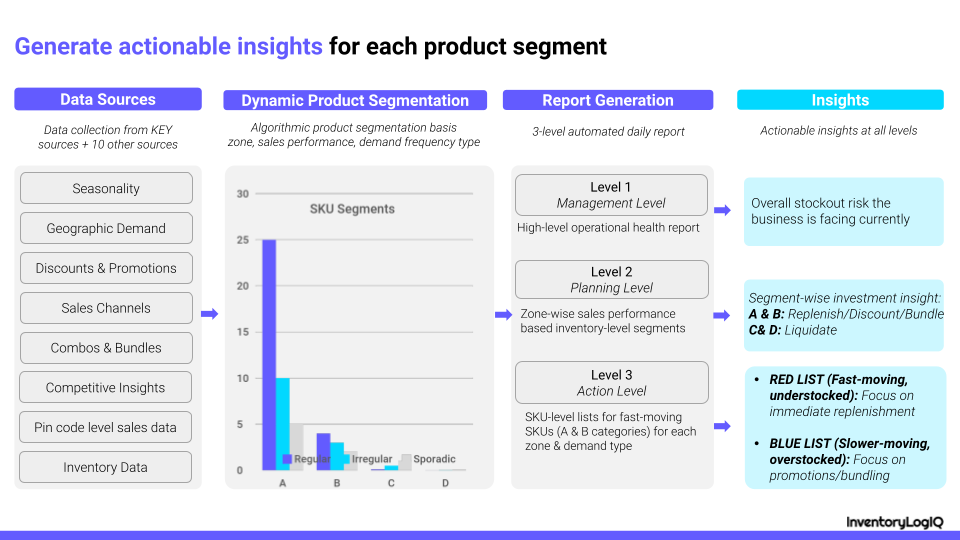
Businesses can use InventoryLogIQ to gather real-time data to gain a detailed and comprehensive view of their inventory in real-time. Companies can use this to optimize inventory, lowering the risk of having too little or too much inventory. InventoryLogIQ has streamlined how firms manage their inventory, from tracking assets to giving real-time information regarding inventory conditions and locations. Some of the benefits you can observe while using InventoryLogIQ include:
Boosts Inventory Control
A lack of current data might cause inconsistent supply and demand. Improved forecasting inventory accuracy can lead to better business results when real-time data is employed. Real-time stock visibility is provided by InventoryLogIQ, which may also automatically initiate replenishment orders as necessary. Due to fewer stockouts, improved inventory levels and cheaper transportation costs due to products being supplied only when necessary, revenues are enhanced. InventoryLogIQ gives companies real-time access to stock levels, enabling them to respond rapidly to changes in demand and ultimately generate more revenues.
Maintains Your Businesses Stock Levels
You are compelled to alter your production plans when your inventory levels are low or out of stock, which eventually reduces your manufacturing capacity and raises your expenses. However, keeping extra goods at your warehouse locks in the money and keeps you from investing in your company’s more lucrative areas. You can save warehouse space and money on operations by using InventoryLogIQ’s supply chain forecasting to determine the ideal stock levels.
Plans Production More Effectively
One of the most excellent methods to maximize output is to use InventoryLogIQ’s platform to collect inventory data and get access to sophisticated analytics to evaluate this data. As a result, you have the chance to accelerate your whole production cycle when you set up your operations based on the anticipated demand. Furthermore, by helping companies create realistic projections for each product line, manufacturers can optimize production planning and promote departmental collaboration with the aid of InventoryLogIQ. While external cooperation offers insights into purchase orders, recurring predictions, and supplier details, internal collaboration assures greater access to historical data and market insights.
Improves Your Business Strategies
Based on demand forecasting, businesses predict sales and allocate resources. For instance, a firm might raise production if they anticipate greater demand for a specific product. Demand forecasting in the supply chain also aids in risk reduction and improved financial judgement, boosting profit margins, cash flow, resource, and inventory allocation and expanding growth potential. In addition, businesses can lower their operational costs and total spending by using InventoryLogIQ to obtain better visibility into inventory accounting. As a result, all functional and operational strategies can be built based on InventoryLogIQ’s supply chain forecasting.





